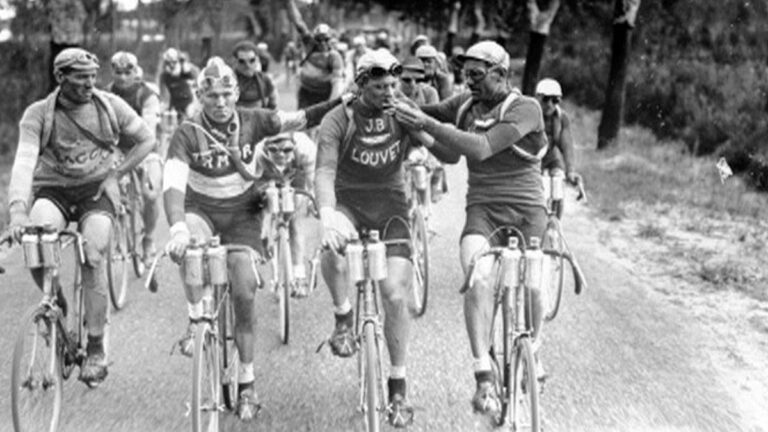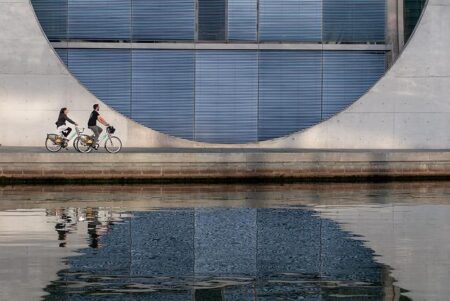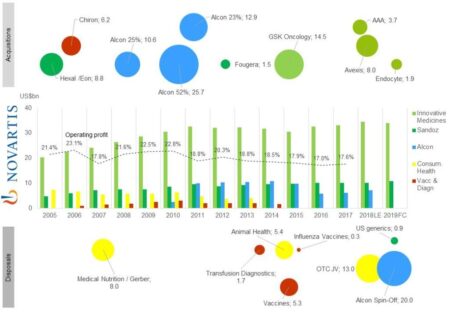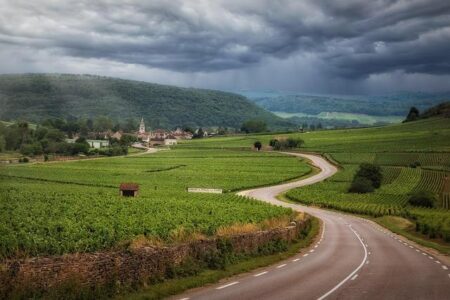The Tour de France, widely regarded as the most prestigious cycling race in the world, has a storied history that dates back over a century. Since its inception in 1903, this grueling multi-stage event has challenged the world’s top cyclists to conquer thousands of kilometers across France’s diverse and often punishing terrain. From legendary winners who have etched their names into sporting lore to the evolving race distances and iconic mountain climbs, the Tour de France continues to captivate millions of fans globally each summer. This article provides a comprehensive overview of the Tour de France, exploring its rich history, celebrated champions, challenging course, and intriguing facts, drawing on authoritative insights from Britannica.
Tour de France Origins and Evolution Through the Decades
The Tour de France began in 1903 as a daring challenge to boost the sales of the struggling sports newspaper L’Auto. Conceived by journalist Henri Desgrange, the inaugural race covered 2,428 km over six gruelling stages, drawing only 60 riders, yet capturing the imagination of the French public. Its early editions were marked by punishing distances and rudimentary support, testing the limits of human endurance. Over the decades, the race evolved from a predominantly French affair to a global spectacle, incorporating innovations such as team strategies, support cars, and advanced cycling technology.
Key milestones in its evolution include:
- 1930: Introduction of national teams, replacing trade teams to boost patriotism and competition.
- 1962: Return of trade teams, reflecting changing commercial realities of the sport.
- 1980s: Integration of televised coverage that transformed it into a worldwide media event.
- Modern era: Expansion from 21 stages over approximately 3,500 km, incorporating mountain climbs, time trials, and sprint stages, emphasizing versatility and strategy.
| Decade | Distance (km) | Notable Evolution |
|---|---|---|
| 1900s | ~2,500 | Inaugural race, basic logistics |
| 1930s | ~4,000 | National teams introduced |
| 1960s | ~4,000 | Trade teams reintroduced |
| 1980s-2000s | ~3,500 | Global media exposure, technological advances |
Legendary Champions and Their Record-Breaking Triumphs
The Tour de France has witnessed a cavalcade of extraordinary talents whose names have become synonymous with cycling excellence. Icons like Jacques Anquetil, the first to clinch five titles, and Eddy Merckx, often hailed as the greatest, redefined endurance and strategy on the mountainous French roads. Their relentless pursuit of victory not only set new performance benchmarks but also inspired generations of competitors to push beyond perceived limits.
Among the most notable triumphs, Bernard Hinault stands out for his aggressive racing style and five overall wins, while Chris Froome captivated the modern era with four victories marked by tactical brilliance and resilience. These champions didn’t just win—they shattered records and raised the bar for what’s possible in the world’s most grueling bike race.
- Jacques Anquetil: 5 titles, first to break the five-win barrier (1957, 1961–1964)
- Eddy Merckx: Dominated with 5 wins and most stage victories
- Bernard Hinault: 5 wins noted for tenacity and versatility
- Chris Froome: Modern legend with 4 titles and commanding climbs
| Champion | Victories | Nationality | Era |
|---|---|---|---|
| Jacques Anquetil | 5 | French | 1950s-1960s |
| Eddy Merckx | 5 | Belgian | 1960s-1970s |
| Bernard Hinault | 5 | French | 1970s-1980s |
| Chris Froome | 4 | British | 2010s |
Analyzing the Grueling Distances and Challenging Terrain
The Tour de France pushes cyclists to their absolute limits, often spanning an average of 3,500 kilometers across diverse landscapes. Riders face not only vast distances but also relentless stages that test endurance, strategy, and mental toughness. The terrain varies dramatically, from flat sprinting routes favoring speed specialists to punishing mountain ascents that separate champions from the rest. Legendary climbs such as Alpe d’Huez and Mont Ventoux have become synonymous with the race’s brutal nature, with gradients that can exceed 10% over several kilometers, demanding exceptional climbing prowess.
Beyond elevation, the course includes a mixture of road surfaces and weather conditions that add complexity for the peloton. Participants must navigate tight mountain switchbacks, windy plateaus, and cobblestone sections, each requiring precise bike handling and stamina conservation. Key elements include:
- Long mountain climbs: Multiple stages involve ascents exceeding 15 kilometers in length.
- Time trials: Short but intense stages with no drafting allowed.
- High-altitude challenges: Some passes reach over 2,000 meters, affecting oxygen availability.
| Terrain Type | Typical Distance | Average Gradient |
|---|---|---|
| Flat Stages | 180-220 km | 0-2% |
| Mountain Stages | 150-200 km | 5-10% |
| Individual Time Trials | 20-60 km | Varies |
Key Facts and Insider Tips for Following the Race Live
For enthusiasts aiming to catch every thrilling moment of the Tour de France, tuning into live broadcasts and online streams is essential. Public broadcasters across Europe and specialized sports channels worldwide provide extensive coverage, often with expert commentary that delves deep into race tactics and rider profiles. Keep an eye on official social media handles for real-time updates, behind-the-scenes footage, and direct access to race leaderboards. Fans on location can maximize their experience by checking the official route map and stage profiles in advance—crucial for finding prime viewing spots near climbs or sprint zones.
Insider tips for following the race live:
- Subscribe to the official Tour de France app for live GPS tracking of riders.
- Leverage cycling podcasts for pre- and post-stage analyses to enhance race understanding.
- Use weather apps to prepare for variable mountain or coastal conditions that often influence race dynamics.
- Engage with fan forums and Twitter Q&A sessions hosted during stages for community insights and expert opinions.
| Media Platform | Features | Availability |
|---|---|---|
| Official Tour de France App | Live tracking, stage stats, rider profiles | Worldwide, iOS & Android |
| Eurosport | Full stage broadcasts, expert commentary | Europe |
| NBC Sports | Highlights, live streams, multi-camera coverage | USA |
| France Télévisions | Free-to-air broadcasts, real-time updates | France |
In Conclusion
As the Tour de France continues to captivate audiences around the globe, its rich history, legendary winners, and grueling distances remain a testament to human endurance and competitive spirit. From its humble beginnings in 1903 to the modern spectacle it is today, the race not only challenges the limits of cyclists but also unites fans in a shared passion for the sport. For those seeking to understand the significance of this iconic event, Britannica’s comprehensive coverage offers invaluable insights into the Tour’s past, present, and future.




